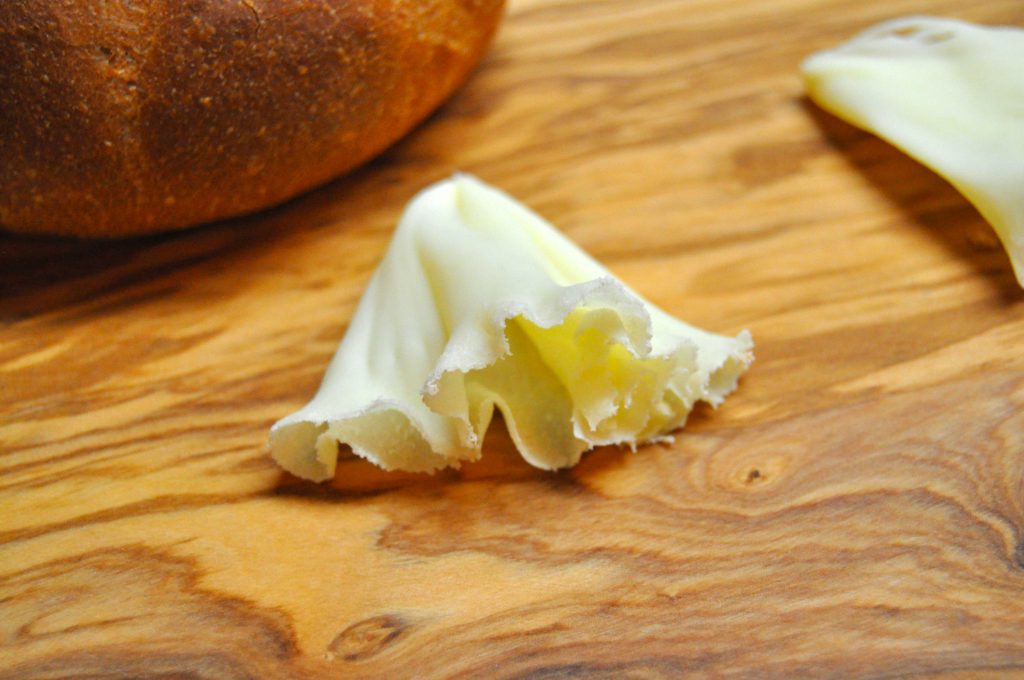Cheese lovers all over the world are enthusiastic about the Swiss cheese Tête de Moine, which comes from the Swiss canton of Bernese Jura. Bernese Jura is the French-speaking part of the canton of Bern with a population of about 52,000.
Tête de Moine translates to “monk’s head” in English: The cheese from the Jura has a long tradition.
Bellelay Monastery
In the 12th century, the monks from the Bellelay monastery in the Bernese Jura were mentioned for the first time in connection with the semi-hard cheese Tête de Moine. At that time, the land belonging to the monastery was subject to annual interest, which had to be paid by the monks. The monks from Bellelay paid their annual interest with cheese that they produced themselves: This is how the Tête de Moine was born.
According to various sources, the monks of Bellelay used their home-made cheese to pay their annual interest as early as 1192. The monastery of Bellelay was built in 1136.
The cheese is said to have received the name Tête de Moine only at the end of the 18th century. The amount of cheese stored in the Bellelay monastery is said to have been measured per “monk’s head” (French: Tête de Moine). Before that, the cheese bore the simple name “Bellelay cheese” (French: Fromage de Bellelay).

Eating Tête de Moine
When eating Tête de Moine, there is a special feature: unlike other cheeses, which are often sliced, Tête de Moine is scraped. In the process, the cheese rind comes off the edge. After scraping, a thin piece of cheese in the form of a rosette is revealed, which can now be eaten.
A special tool is used to scrape the Tête de Moine: the Girolle.
Invented and patented in 1981, the girolle is a cheese slicer with a crank. With the help of a girolle, the Tête de Moine can be scraped into rosettes. Scraping increases the surface area of the piece of cheese – this is supposed to enhance the flavor.
French Revolution: the end of cheese production
The way Tête de Moine is cut is sliced remotely resembles a monk’s tonsure: much of the hair is shaved and a ring of hair remains. It looks similar when a tête de moine is scraped.
During the French Revolution, large parts of what is now the Bernese Jura were annexed by France. The monks were expelled from Bellelay and cheese production in the Bellelay monastery came to a halt. The production of cheese from the Jura was on the verge of extinction.
Only the farms that were near the monastery continued the production of the cheese: but this did not change the fact that the Tête de Moine disappeared from the scene for decades.
Renaissance
It was not until the mid-19th century that Bellelay cheese experienced a renaissance: a Bellelay farmer promoted Tête de Moine at various exhibitions, winning several prizes. This motivated several Bellelay farmers to ramp up their production of the cheese: By the mid-20th century, the cheese had returned – in the 1950s, annual production is said to have been about 27 tons.
In 2001, Tête de Moine was granted a protected designation of origin (AOP, Appellation d’Origine Protégée). Currently, there are less than ten village cheese dairies in the Bernese Jura that produce Tête de Moine according to the strict AOP specifications.
Production of Tête de Moine
The production of Tête de Moine is complex: first, the untreated cow’s milk is heated to 38 degrees Celsius in copper vats. Then the lactic acid bacteria are added and the milk is curdled with the help of rennet. During the curdling process, the whey is separated from the milk and the curd is formed. This process takes about half an hour.
The curd is then cut into cheese grains using a cheese harp – a type of cutting tool. During this process, a large part of the whey is once again drained off.
During this step, the temperature of the cheese mass is 46 to 53 degrees Celsius.
Now the cheese mass is removed from the vats and pressed into cylindrical molds – here the cheese acquires the characteristic shape of a Tête de Moine loaf. However, these molds are still two times larger than a loaf, since the curd still contains a lot of whey. The loaves are pressed and turned until no more whey escapes. Now each wheel of cheese is marked with a casein mark showing the date of production and the producer’s farm.
The following day, the cheeses are immersed in a salt water bath for at least 12 hours. During this process, the cheese absorbs salt and water is removed.
Finally, the cheese is ripened for at least 75 days in a humid cheese cellar (approx. 90% humidity) at a temperature between 13 and 14 degrees Celsius. During this time, the cheeses lie on boards made of spruce wood.
During the ripening period, the cheese is regularly brushed with a mixture of salt water and a surface culture.
The milk: the basis of Tête de Moine
Tête de Moine has a long tradition: what once began as a regional product from the Bernese Jura is now an internationally sought-after product. For some time, Tête de Moine even disappeared from the scene altogether: however, the memory of the special cheese soon flared up again.
The cows whose milk is used to make Tête de Moine graze above 700 meters above sea level: there, herbs and plants grow more slowly than elsewhere and therefore give off a special aroma that is reflected in the milk. This milk gives Tête de Moine its unmistakable spicy flavor, which makes it a sought-after product at cheese counters around the world.
Cover picture: A half loaf of Tête de Moine on a Girolle, © Simon von Ludwig, all rights reserved.
Sources: The official site of Tête de Moine, numerous cheese guides

 Deutsch
Deutsch Français
Français